University Peer Review Report: Scientific Article Analysis and Review
VerifiedAdded on 2023/03/20
|5
|929
|30
Report
AI Summary
This report presents a peer review of a scientific article focusing on behavioral changes in dairy cows with clinical mastitis. The review assesses the article's adherence to research standards, including validity, reliability, and currency, highlighting its strengths in clear and concise communication of findings. It critiques the article's presentation, logical flow, and unbiased approach, while also pointing out limitations such as the lack of statistical analysis and graphical data. Recommendations for improvement include refining the title, incorporating additional information and visual aids, and encouraging independent analysis through paraphrasing. The review references the original study and provides a detailed evaluation of its strengths and weaknesses, offering suggestions for enhancing the article's comprehensiveness and impact. The report aims to provide a comprehensive assessment of the scientific article's quality and effectiveness.
1 out of 5
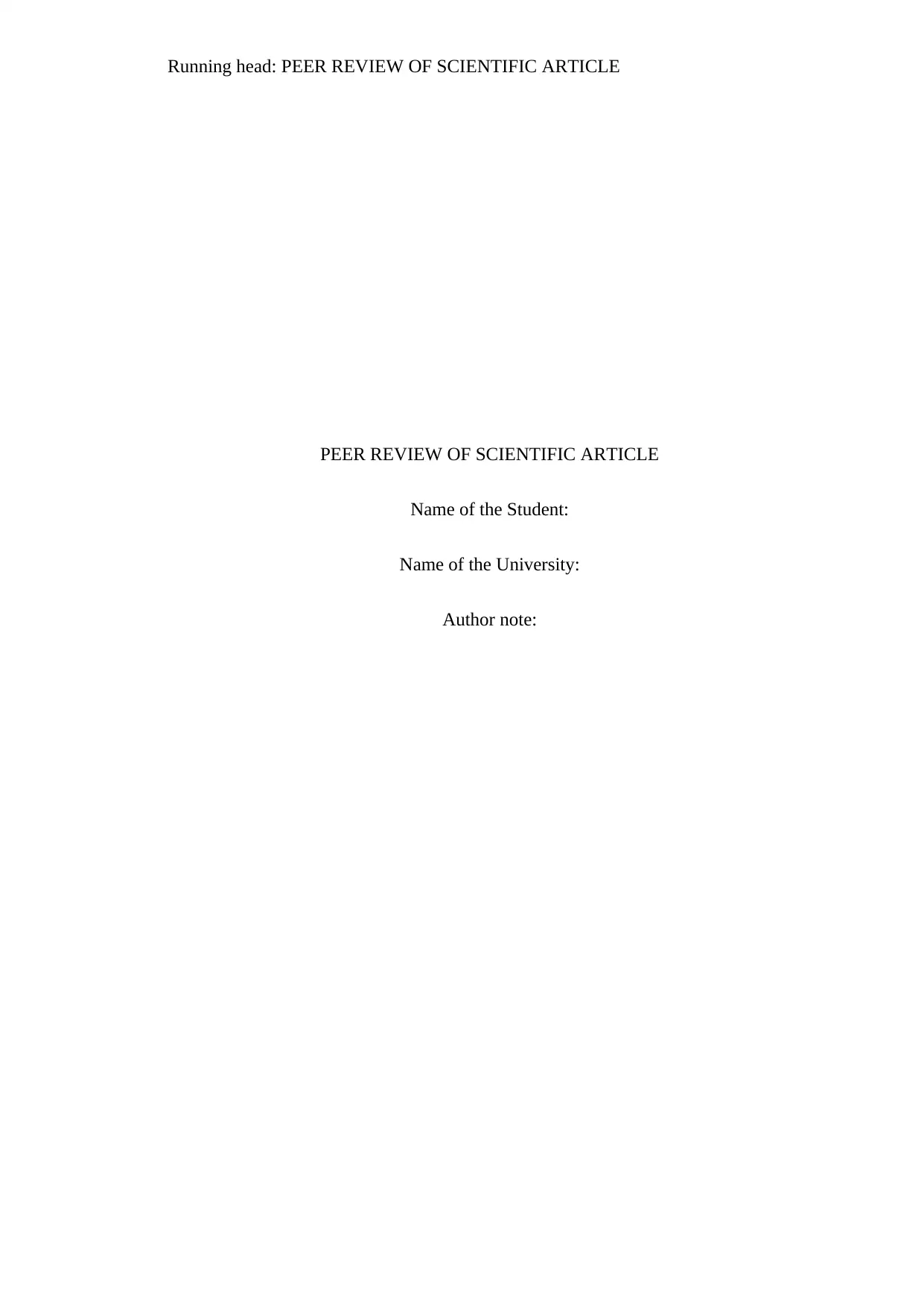
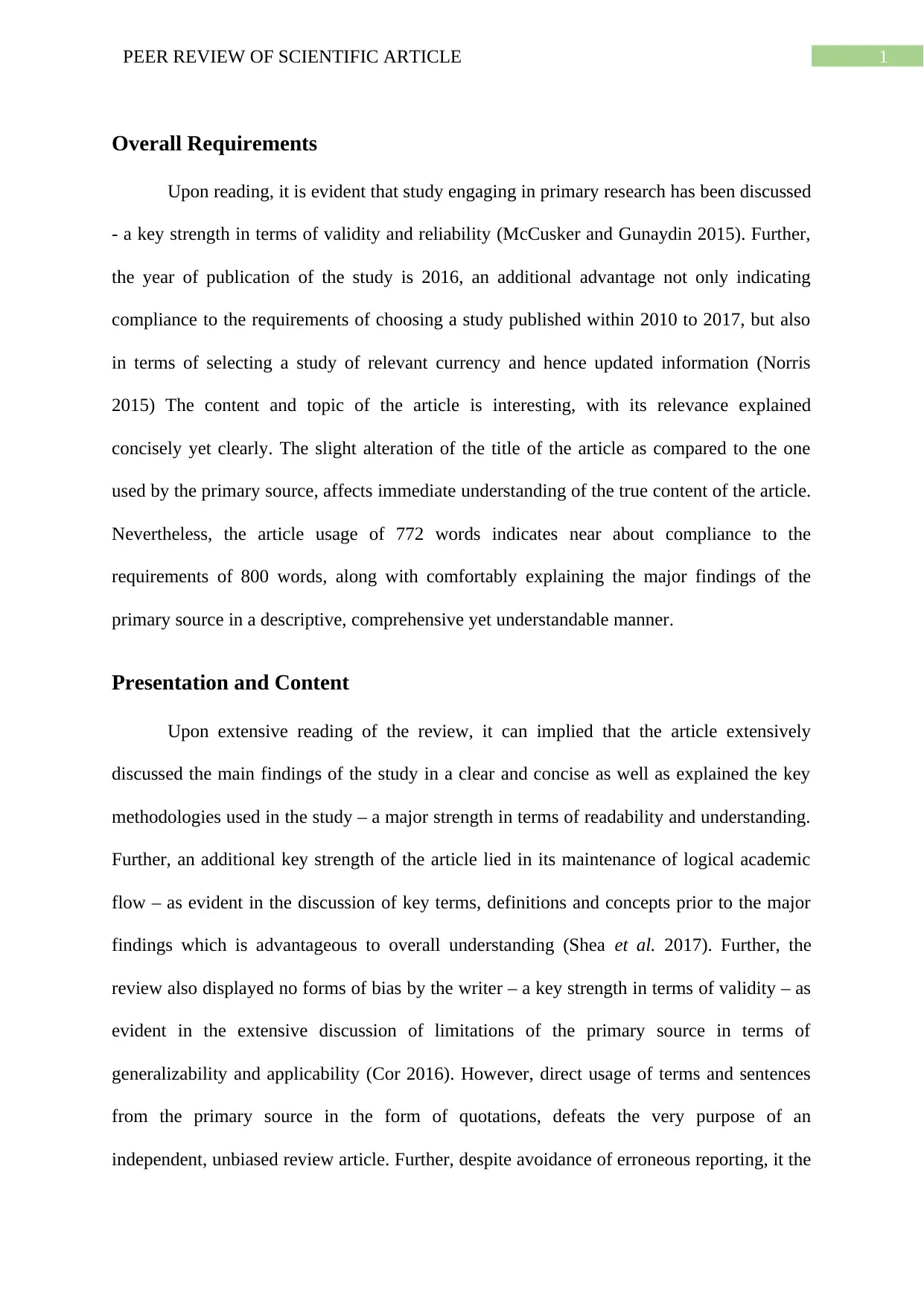
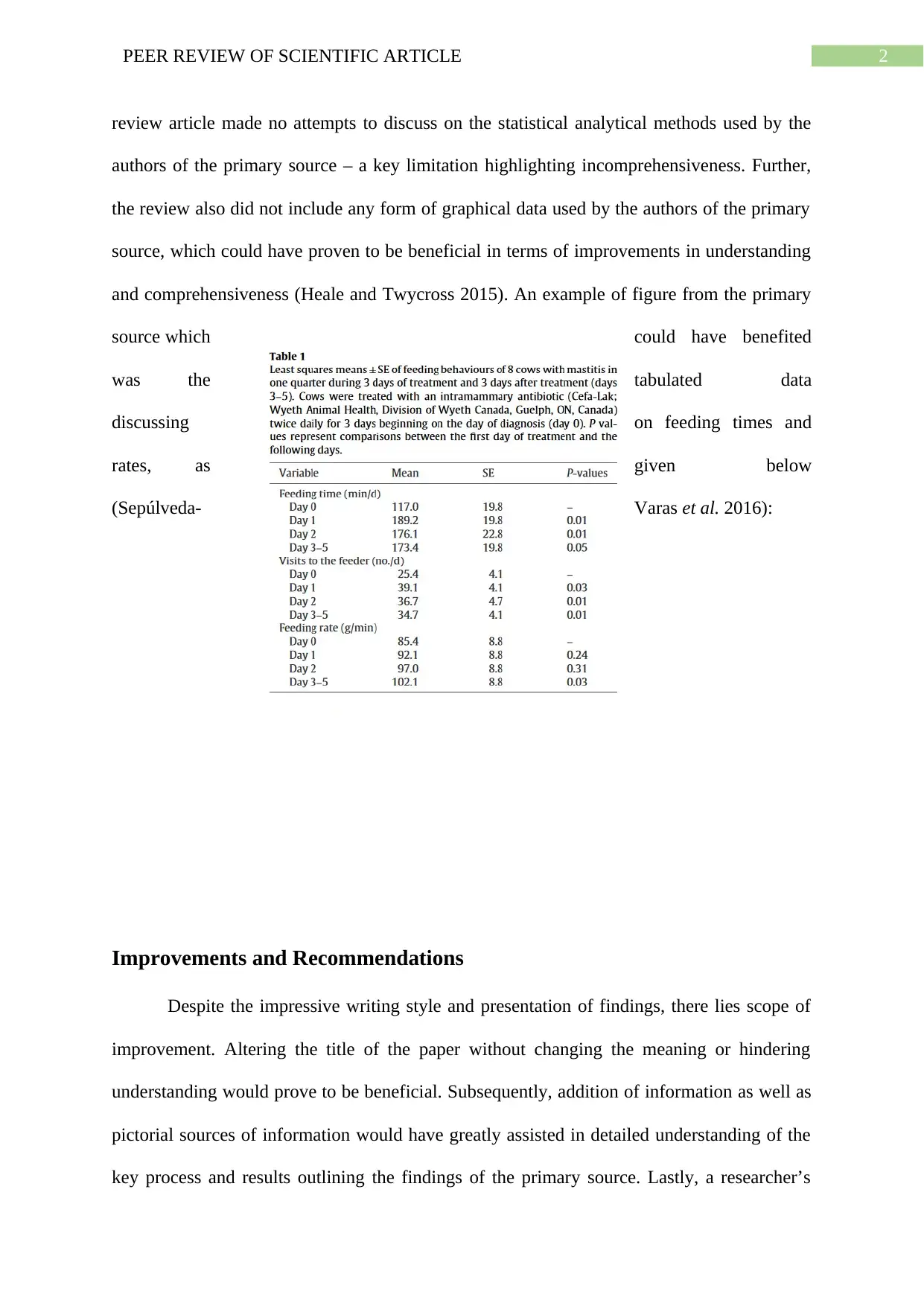

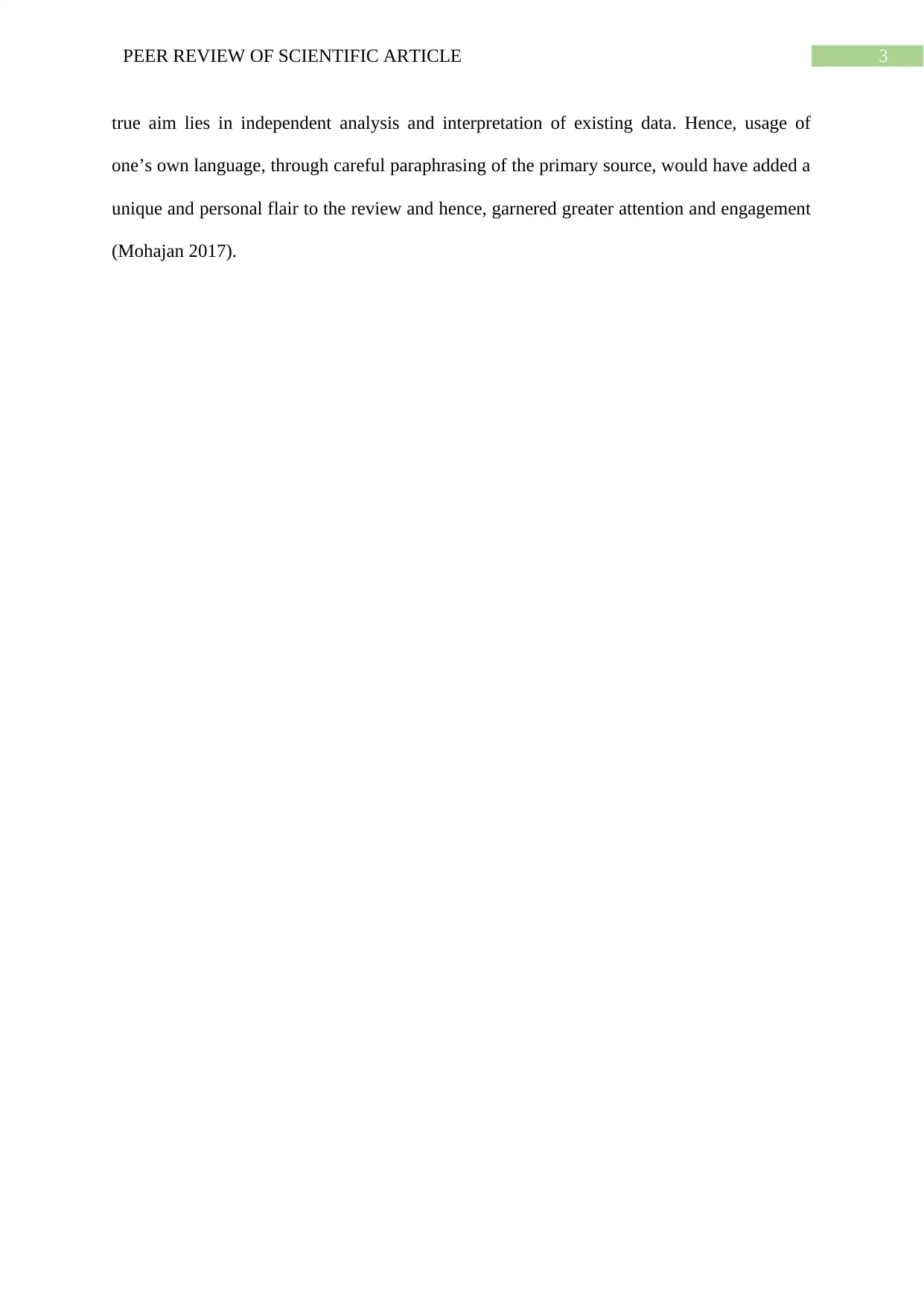
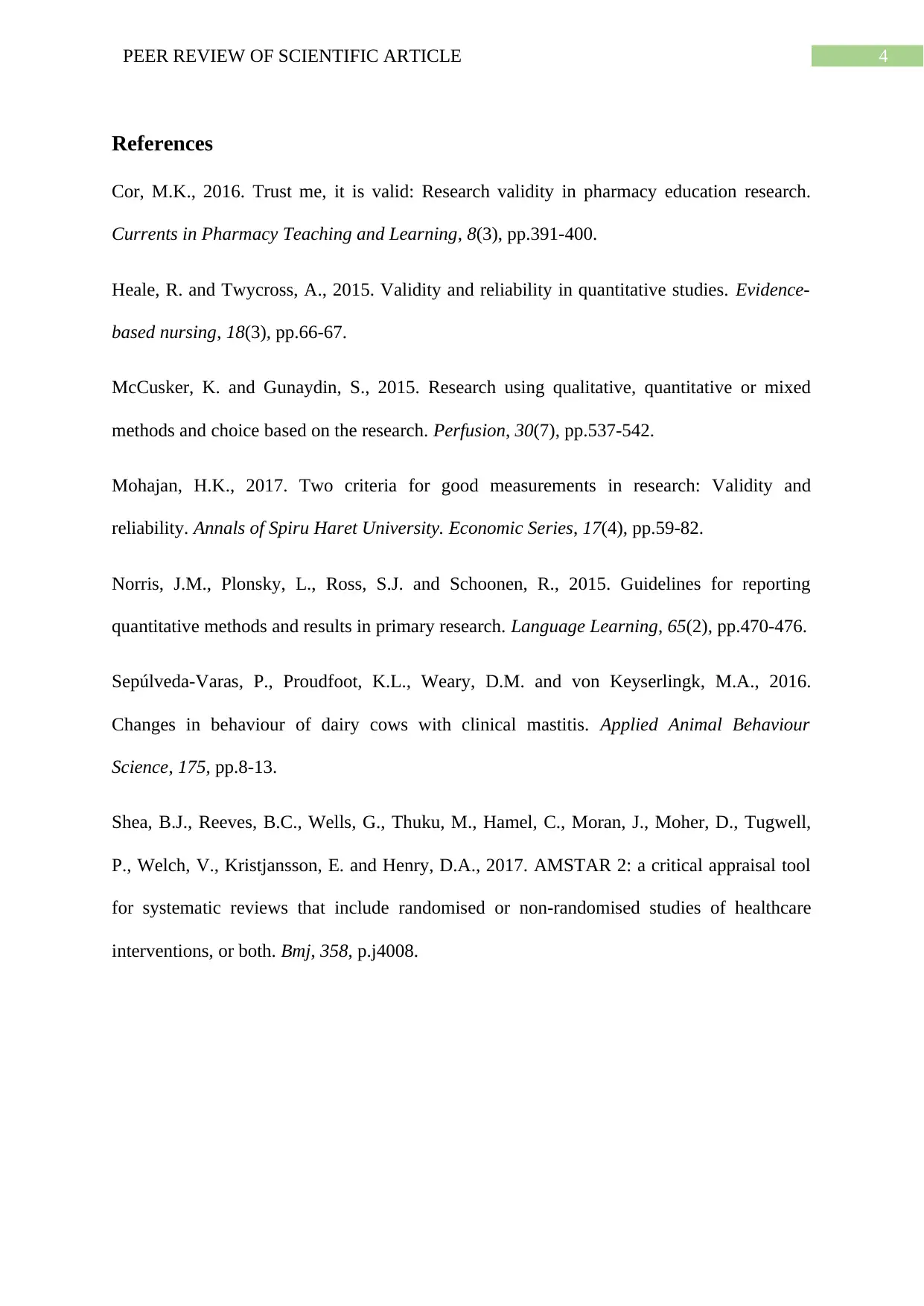





![[object Object]](/_next/static/media/star-bottom.7253800d.svg)